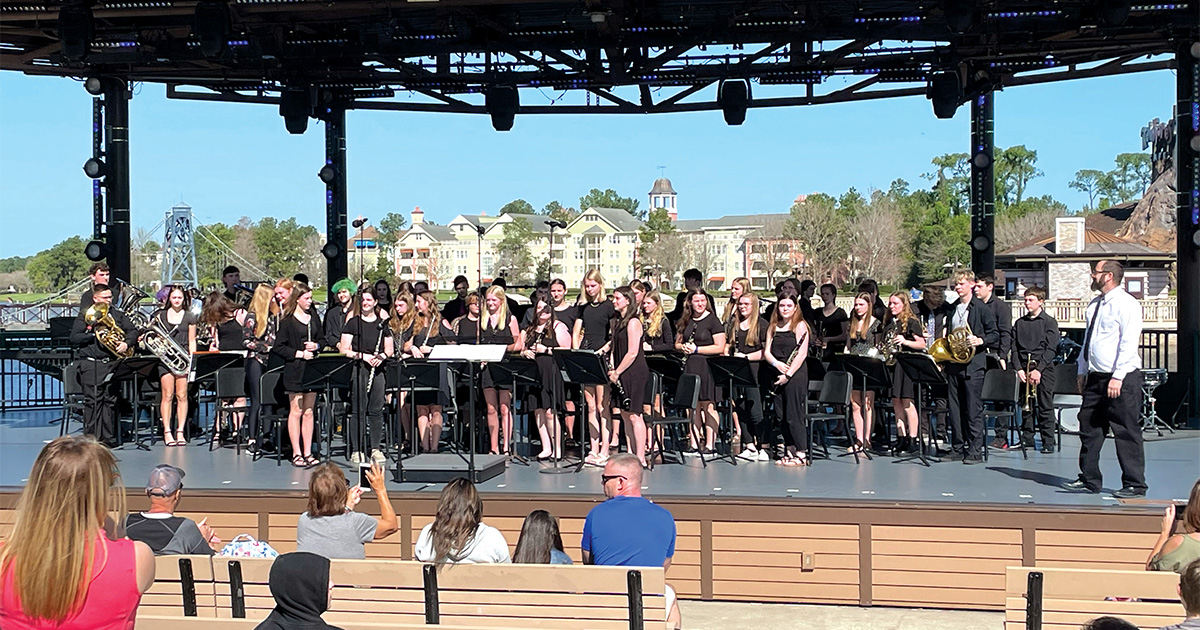The struggle for equal rights for Black people left an indelible mark on our society. Students can learn about this important period in our nation’s history by visiting the many museums, memorials and historic trails that explore the civil rights movement.
Birmingham Civil Rights Institute | Birmingham, Alabama
The Birmingham Civil Rights Institute highlights the struggles Black people faced in the 1950s and 1960s. On display are water fountains and streetcars separated by “White” and “Colored” signs. Also displayed are models of 1960s “Black” and “White” classrooms, illuminating a stark disparity. Civil rights-era artifacts and videos of student freedom marchers directly affect visitors.
Selma to Montgomery National Historic Trail | Alabama
This Historic Trail honors those who walked its route during the 1965 Voting Rights March and those who paved the way for peaceful protest. The Selma to Montgomery march publicized that while the 15th Amendment guaranteed the right to vote, a policy of segregation had left our nation divided. Walking this trail, students could imagine the mindset of the tense foot soldiers who marched on Bloody Sunday. Unlike the Americans of yore, your students will freely cross the Edmund Pettus Bridge.
National Civil Rights Museum at the Lorraine Motel | Memphis, Tennessee
The National Civil Rights Museum is a series of museums and historic buildings built around the Lorraine Motel, the site of Martin Luther King Jr.’s assassination in 1968. The many student-centric exhibits include Standing Up by Sitting Down, housing the original lunch counter where four North Carolina college students peacefully, yet emphatically sat, and We are Prepared to Die, which explores the role of student freedom fighters.
Martin Luther King, Jr. National Historic Site | Atlanta, Georgia
A young dreamer named Martin Luther King Jr. became the leader of our nation’s civil rights movement. At this National Historic Site, students will learn volumes about the man who changed history while simultaneously visiting his birth home and sitting in the pews of his church.
Civil Rights Memorial | Montgomery, Alabama
The Civil Rights Memorial tells the story of the civil rights movement between 1954 and 1968. Lecia Brooks, Civil Rights Memorial Center director, notes the wall behind the memorial’s granite table is engraved with Martin Luther King Jr.’s well-known paraphrase: “We will not be satisfied until justice rolls down like waters and righteousness like a mighty stream.” Focused on education, the Memorial Center brings to life the stories of individual civil rights martyrs. Students have an hourlong guided tour, watch the 20-minute film Faces in Water, and attend a question and answer session. Older students also discuss contemporary social justice issues. Upon departure, students enter their names on the center’s 40-foot digital Wall of Tolerance.
International Civil Rights Center & Museum | Greensboro, North Carolina
The former site of Woolworth’s—and the lunch counter from which four North Carolina Agricultural and Technical State University students launched the 1960’s Greensboro sit-ins—is now occupied by the International Civil Rights Center & Museum. Looking at a backdrop of the famous lunch counter, students will be keenly aware of the impact people can make, regardless of their age. The Battlegrounds area of the museum houses 14 permanent teaching exhibitions that bring the events of the 1960s to life.
Jim Crow Museum of Racist Memorabilia | Ferris State University: Big Rapids, Michigan
The artifacts at the Jim Crow Museum are meant to shock visitors. David Pilgrim, founder and curator, has created provocative exhibits that stir emotions and make people think. On display are the racist and anti-Black images that permeated the American culture for decades. The full-size replica of a lynching tree will stun students, as will the pervasive presence of derogatory words. After seeing these disturbing artifacts, students enter a Room of Dialogue and engage in discussions about promoting tolerance and social justice. Pilgrim believes generating awareness through outrage puts us one step closer to change.
These civil rights exhibitions bestow critical knowledge upon our nation’s future leaders. Working with your SYTA member tour operator, you could help your students learn one of history’s most invaluable lessons. Please be mindful of student age and maturity level when planning these learning experiences, many of which can happen remotely.
Written by Lisa Stickler. The original version of this article appeared in the March 2016 issue of Teach & Travel.
Photo courtesy of the International Civil Rights Center and Museum.





